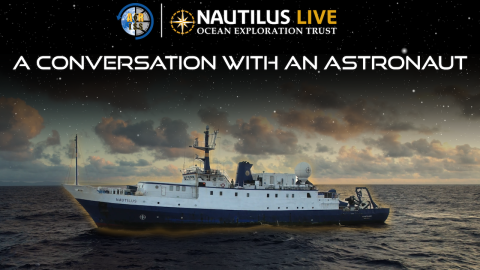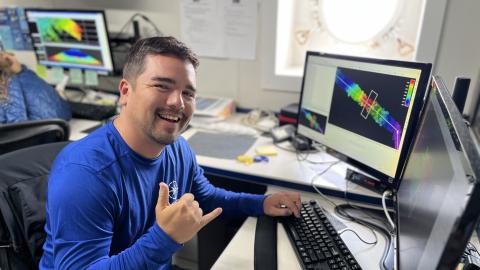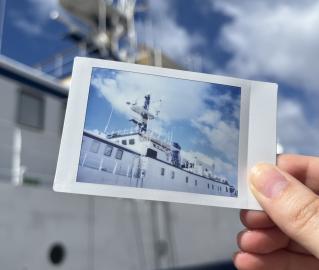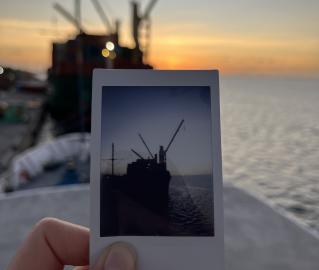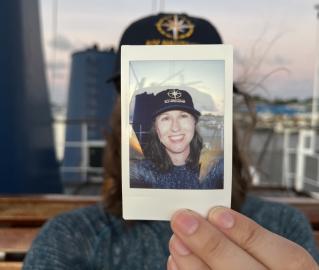Bird & Wildlife Observations from the NA175 Expedition
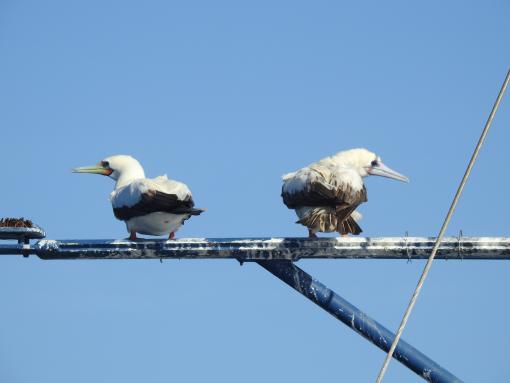
Hello, my name is Adrian Burke, and I’m the bird guy along for the ride on Nautilus expedition NA175. For the past few weeks, I’ve been spending sunrise to sunset on the upper decks of E/V Nautilus observing and documenting birds and other animals, collecting data using the citizen science platforms eBird and iNaturalist. While viewing and identifying animals in the often rough seas and high winds can be quite a challenge, I’ve had a blast so far and am thrilled to be collecting data in some seriously undersurveyed regions!
Carrying out bird surveys in remote areas like this with little data is important because it helps us learn where seabirds go and what areas are particularly important for them. Many seabirds spend their entire lives at sea, coming to land only to breed (often on remote islands), and for many species, we know very little about where they spend most of their lives. In order to protect seabirds, we need to know where they are spending their time at sea in addition to where they are breeding, in order to help mitigate the full spectrum of threats they face.
Seabirds face many threats from humans, including introduced predators at their breeding sites, fisheries bycatch, climate change, light attraction, collisions with infrastructure, habitat loss on nesting grounds, and overfishing of prey and predators that drive prey to the surface. Many seabird species are threatened with extinction as a result. For instance, in the order Procellariiformes (aka the tubenoses, a quintessential order of seabirds), 64 out of 131 species with sufficient data assessed by the IUCN (almost 50%) are considered vulnerable to extinction or worse (from endangered to already extinct), and an additional 17 species are considered near-threatened. This is not a good situation! But there is no doubt that with better information about little-known species and with focused conservation efforts to mitigate threats, species can recover.
So far, I’ve identified no fewer than 27 species of birds on this expedition including 24 seabirds, 2 migratory shorebirds, and 1 waterbird (a Pacific Reef-Heron seen while transiting through the lagoon in Majuro, not yet out at sea). I’ve also had 7 sightings of cetaceans – I’m still working to identify some, but so far I can confirm Short-finned Pilot Whale and Cuvier’s Beaked Whale are among the species seen. Flying fish have been plentiful in many areas, though photographing and identifying them to species level is a next-level challenge.
Some highlights from the expedition so far include:
- Thousands of Sooty Terns (some 7000+ so far), most common around Howland & Baker where over a million are reported to breed
- A small group of Red-tailed Tropicbirds around 50 miles offshore of Howland & Baker engaged in courtship flight, wherein one bird flies above another, then flies upwards, in reverse, and down below the other in a semicircle before peeling off. I see this behavior often during nesting season at Kīlauea Point on Kauaʻi, where this species breeds, but I would not have expected them to do this so far out at sea like this!
- A Nazca Booby near Howland & Baker, way out of the species’ normal range in the eastern Pacific
- A single Phoenix Petrel out at sea while transiting through the Phoenix Islands area of Kiribati – a vulnerable species with limited breeding islands in the tropical central Pacific which I’d really wanted to see!
- Fairly regular sightings of Pacific Golden-Plovers and Ruddy Turnstones, two highly migratory shorebirds which nest in the Arctic tundra and fly thousands of miles over open ocean twice a year to and from their wintering grounds on remote islands and distant shorelines to spend the winter
To document my sightings, I’ve been collecting data with eBird and iNaturalist, two citizen science databases that allow everyday people to contribute meaningful data that can be used for science! eBird works by noting your location, date, time spent birding, distance traveled (if any), and then recording the number and species of birds seen and heard. I’m creating many eBird checklists every day in roughly 10-20 minute increments to get fine-scale data on bird distribution and abundance at sea. iNaturalist works by uploading photos or audio recordings of any living thing, along with location and time/date data, to the database, after which experts and knowledgeable enthusiasts can weigh in on species identification. I’m using iNaturalist to upload photos of and help identify the non-bird animals I see on the expedition, though I plan to upload a few bird observations there later as well.
In short, eBird data provides a snapshot of the overall diversity and abundance of birds in a given area and time, whereas iNaturalist provides documentation of a particular species sighting at a place and time. These citizen science platforms allow everyday people to contribute data that scientists can use for a wide variety of analyses, even sometimes helping to discover new species! You can explore my eBird and iNaturalist data as the expedition progresses at the links below (these are works in progress). And remember that if you ever go out looking for birds, or if you ever take a photo of any wild living thing ever, you can contribute meaningful data that can be used for science by using eBird or iNaturalist!
Find eBird trip report here
Find iNaturalist project here
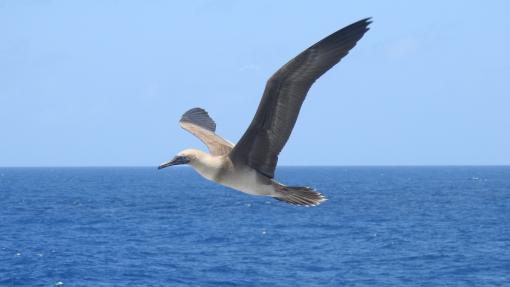
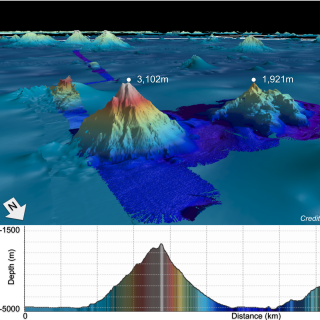
Seafloor Mapping Offshore Howland & Baker Islands
During this expedition, E/V Nautilus explores the waters offshore Howland & Baker Islands. Located roughly midway between Hawaiʻi and New Zealand in the Central Pacific Ocean, the islands of Howland and Baker are some of the most isolated land masses on Earth.
